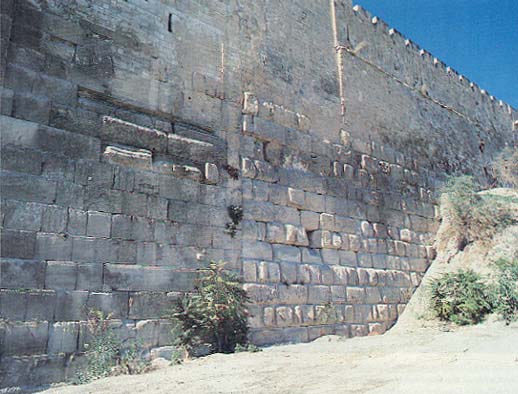Image Details

Garo Nalbandian
The straight joint. A vertical seam interrupts the lower courses of masonry in the eastern wall of the Old City, 105 feet north of the southern end of the wall. The straight joint marks the transition between an older section of wall on the right (north) and later construction on the left (south). This later addition was probably built by Herod the Great in the first century B.C., to enlarge the earlier and smaller Temple Mount. However it is less certain when the older, northern wall was constructed.
The rough-faced stones to the north of the straight joint resemble those in the two or three lowest courses of the eastern wall on either side of the Golden Gate, as well as those in the curved wall discovered underground by Captain Charles Warren east of the Golden Gate. If we could date the masonry north of the straight joint it would help us to date these other walls as well as the gate beneath the Golden Gate, which is related to them. Scholars’ conclusions about when and by whom the wall north of the straight joint was built differ, however, by as much as 1,000 years—from the time of Herod to the time of Solomon.
